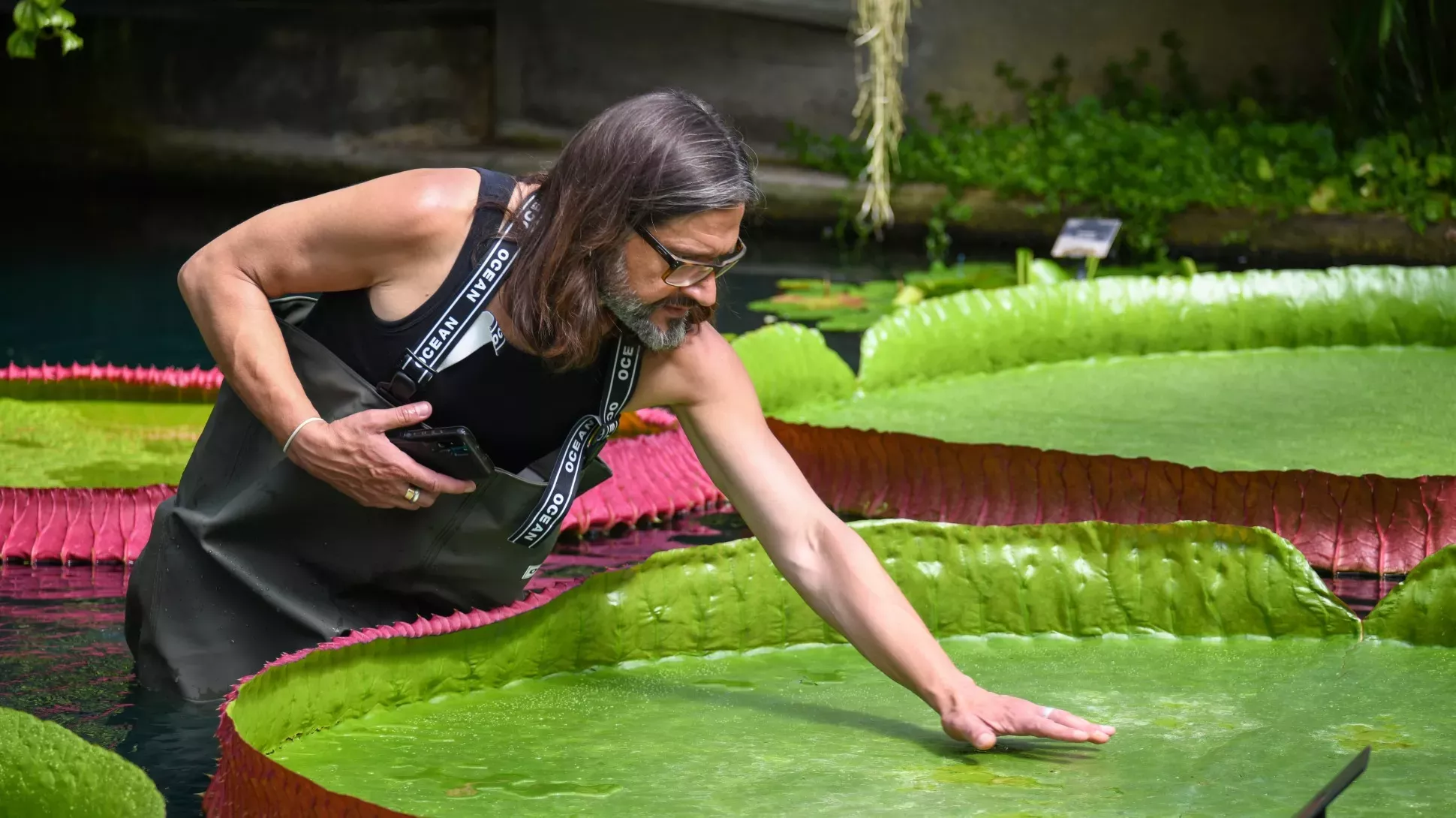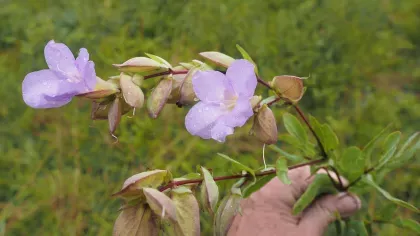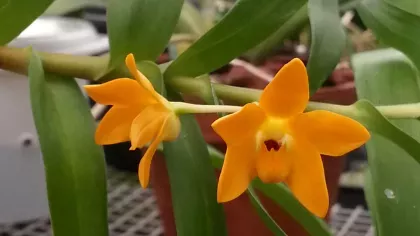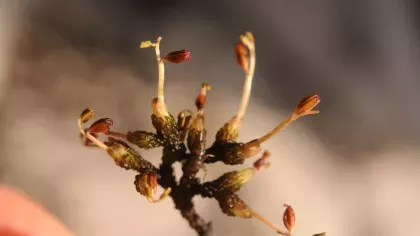21 December 2022
Kew's top 10 new species of 2022
Here's our 10 favourite plant and fungal discoveries of 2022 by Kew botanists and mycologists.

It's been another astounding year for botanical and mycological discoveries here at Kew.
These new species to science have come from all corners of the world — the rainforests of central Africa, the Atlantic forest of Brazil, and even the caves of continental east Asia.
Many of them represent species discovered on the very brink of extinction, with some known only to a single location on Earth.
On this year's list, we highlight not only species with interesting characteristics or those with urgent conservation needs, but also some named after individuals who have lain down their lives to protect our Earth's biodiversity.
Without further ado, here's Kew's top 10 discoveries of 2022.
1. The Queen's hedgehog fungus (Hydnum reginae)
Not an animal, as you might expect, Queen's hedgehog is a white fungus named in part after the soft white spines found underneath its cap, replacing the gills found in many other mushroom species, and in part for Her Majesty the Queen, Elizabeth II.
You'll find Queen's hedgehog in just one area of Great Britain — the ancient beech forests of White Down in Surrey. But this is not the only place you'll find it worldwide
Known as Hydnum albidum for more than 130 years, the species' distribution was thought to spread across North America and throughout Europe. That was until new genetic research by Kew and partners found clear distinctions between the American and European variants, revealing a new species on our doorstep.

2. Carpotroche caceresiae, a tree of the Caribbean rainforests
This new discovery is named in memory and recognition of the bravery of Berta Cáceres Flores (1971-2016).
Berta's unwavering commitment to oppose the destruction of natural habitats and the loss of indigenous land in Honduras saw her recognised with the Goldman Environmental Prize in 2015.
Less than a year after this recognition, she was murdered in relation to her opposition to the Agua Zarcas hydroelectric project on the Gualcarque river in northwest Honduras.
Berta was one of the 123 environmental activists assassinated between 2009 and 2016 while fighting for the cause.
Carpotroche caceresiase is found in the rainforests of Honduras and Nicaragua, and just like the Queen's hedgehog, was previously thought to be one variant of a another species, Carpotroche platyptera.
Achieving a height of up to 15m, it can be spotted from its star-like flowers that grow directly from the main stem, eventually yielding charismatic five-winged fruits.

3. The world's largest giant waterlily, Victoria boliviana
A huge moment for us here at Kew, earlier in 2022 we formally separated Victoria boliviana from the other two giant waterlily species: Victoria amazonica and Victoria cruziana
The plant is enormous, with leaves reaching lengths of 3.3m across the surface of the water on which they lie. This creates such buoyancy that sometimes the plant is capable of supporting the weight of a small child.
Nearly two centuries have passed since the original two species had been identified by science, and in fact, a dried specimen of this third species had existed here in Kew's Herbarium for more than 170 years — a botanical time capsule.
It was the keen eyes of Botanical Horticulturalist Carlos Magdalena and Botanical Artist Lucy Smith that raised suspicion of the plant's uniqueness from its relatives, with differences in some key traits.
Modern DNA analysis by our Kew Scientists, Oscar A. Perez Escobar and Natalia Przelomska, confirmed the species split, and so this giant discovery in partnership with 16 other Bolivian and European scientists became one of our year's highlights.
Victoria boliviana arrives on the world stage with the conservation status of Vulnerable, so there's still work to do to ensure the species' future is secure.
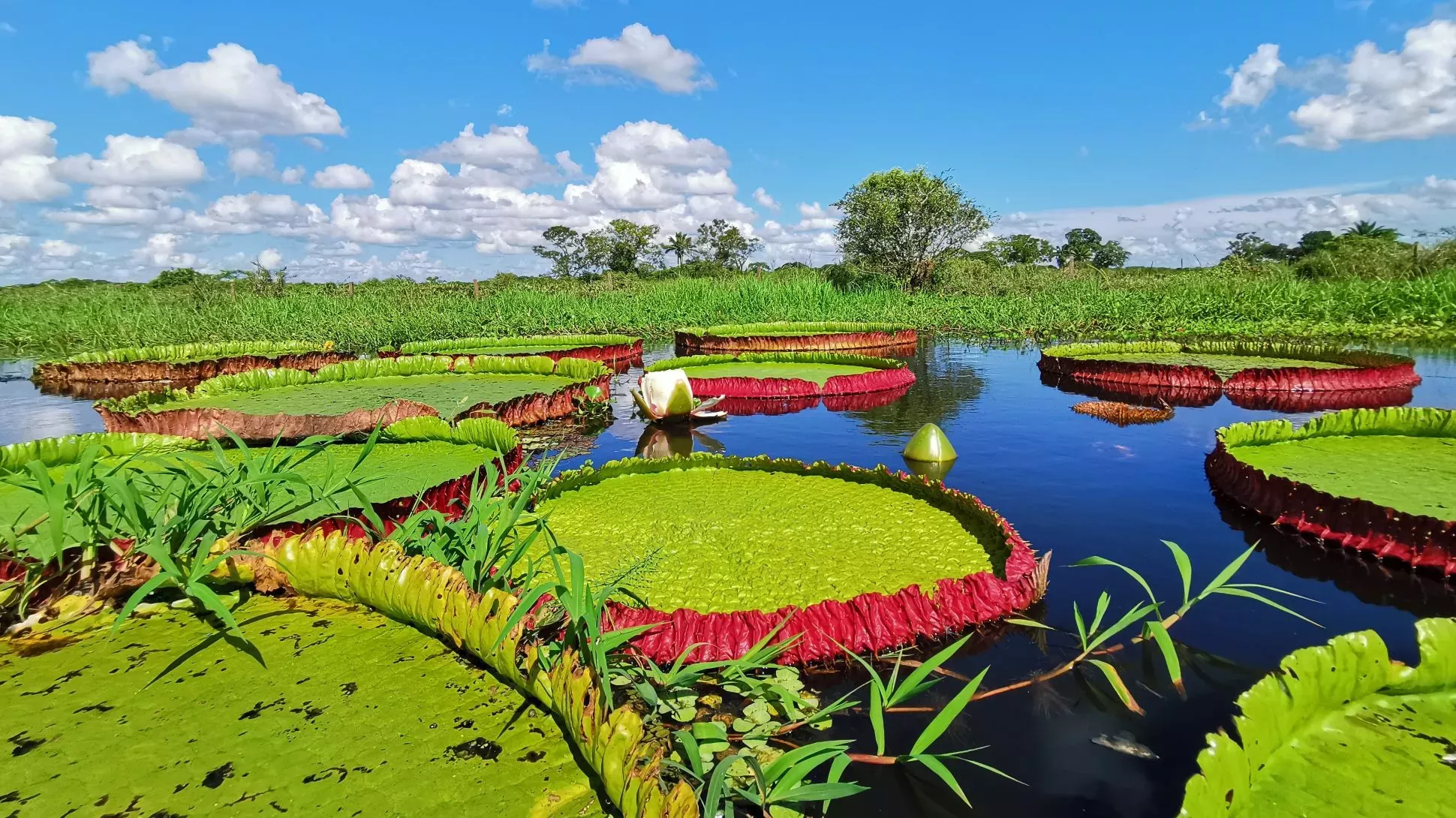
4. Gomphostemma phetchaburiense — a 'garland of nails' threatened by pigeon droppings
It's certainly an unusual reason for a species to be on the brink of extinction, and of course this species faces larger issues than just droppings.
A singe colony of rock pigeons (and the waste they leave behind) concern Critically Endangered Gomphostemma phetchaburiense as they share a home.
This home is a cave entrance within an unprotected area of Thailand, east Asia. All known plants of this species, no more than 50 in total, live in this singular spot.
Pigeon droppings are acidic and may harm the plant's ability to grow if it accumulates, though of course a population so small and isolated is subject to the threat of extinction from any other major disturbance too.
Other known Gomphostemma species have medicinal uses such as in the treatment of malaria or tuberculosis, highlighting the additional urgency to understand these unclassified species before they're lost.
Three species of Gomphostemma in total are new to science this year, some known only from a single herbarium specimen, and another found in the remote mountains of northern Myanmar by famous British botanist, Frank Kingdom-Ward.

5. Denise's 'orchid of the falls' (Saxicolella denisea) — Extinct on arrival
Orchids of the falls, as they're known, are extremely niche specialists. They're found primarily in areas of aerated white water, with some species known to as little as a single waterfall.
The adaptations needed to live in such conditions are so specific that the plants have enjoyed little competition from other species for millennia, though now they face a threat to their habitat.
An urgent push to find alternatives to fossil fuels in powering our planet has fruited many alternatives, some far more viable than others. Hydroelectric dams are one where the picture is complex.
Dams need to be in solid foundations of rock, where there is a drop in water. When placed on waterfalls, they significantly disturb miniature ecosystems that may not exist anywhere else on Earth, as well as significant areas of the surrounding landscape.
The most recent to fall victim to such disturbance is a new species — Saxicolella denisea. Formerly found on the Konkouré River of Guinea, West Africa, it most likely met its end last year when the region was flooded for development of a hydroelectric dam 30km downstream.
It's a keen reminder that solutions to the challenge we face from climate change must go hand in hand with solutions to protect and restore our planet's biodiversity.
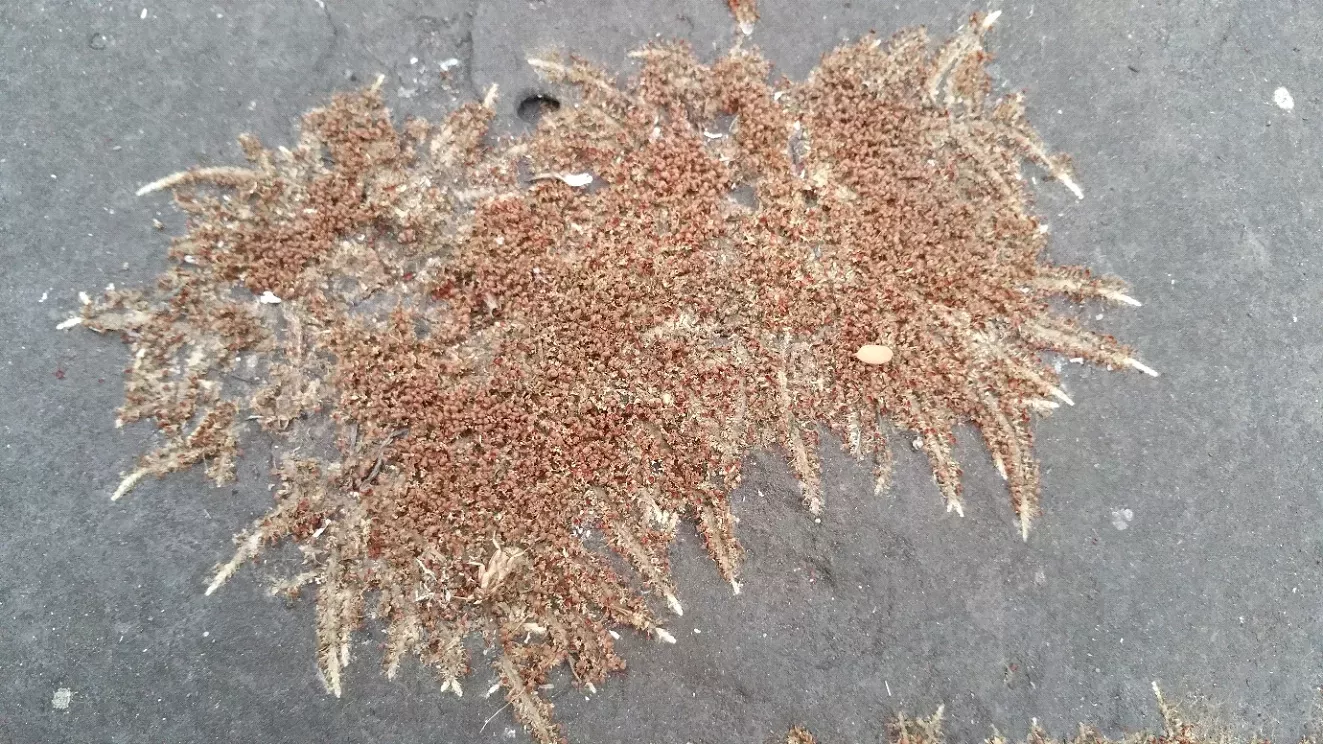
6. Sternbergia mishustinii, the Turkish 'winter daffodil'
Despite only arriving on the scientific stage recently, this species' discovery can be traced back all the way to 1997 and Ukrainian nature explorer, Ruslan Mishutin of Kherson State University.
On a visit to Turkey, Ruslan collected the seed of an unknown bulbous plant that after four years of cultivation revealed itself to be of the 'winter daffodil' genus, Sternbergia.
Ruslan's species was so unique that it matched none of the eight species in the genus known to science at the time, and only after years of research on the structure of its leaves and seeds was it described and named in his honour.
Bright, sulphur yellow flowers emerge from the ground in October-November. These flowers are cryptic, meaning they don't open, and are only 2cm long.
Less than 300 individuals of Sternbergia mishustinii are known globally and occur at a single, secret site. Such a status makes it Critically Endangered, and with anti-inflammatory and antioxidant properties observed in its relatives, it's a species with extra reasons for us to ensure its survival.

7. Cyanoboletus mediterraneensis, the bruising ink bolete
Researchers from here at Kew and the University of Cagliari together with a citizen scientist from Reggio Emilia, Italy have described a new species of Mediterranean bolete.
Officially named Cyanoboletus mediterraneensis, the fungus was found in Northern Israel and Sardinia, Italy.
Individuals were first found by researchers in 2012, and identified based on its morphology (form, shape or structure) as another bolete species that is common across temperate Europe.
It was only with additional collections and modern DNA studies that the discovery of a whole new species was made.
This small to medium sized bolete has a charismatic lemon-yellow stipe (stem), which turns an intense dark blue when handled or damaged.
As the Mediterranean region is a hotspot for climate change, many of the species growing there are of a particular interest.
More studies will be needed to understand this bolete's full distribution, and ensure its longevity in the years to come.

8. Impatiens banen, a busy lizzie paying tribute to Ebo forest's defenders
Native to East Africa, busy lizzie plants are well known for their brightly coloured flowers that are a spectrum of magenta, pink and white.
This year's new species is known only to the granite domes of Ebo forest; a crucial area of plant diversity in Cameroon in which Kew researchers have worked for nearly two decades.
The plant is named after the Banen, one of the region's communities who have led protests against major logging threats to Ebo in the last three years, succeeding in ensuring its protection.
Much of Ebo's astonishing biodiversity remains to be fully studied, and so the site is now a major focus for us, alongside our partners at the National Herbarium of Cameroon and the San Diego Wildlife Alliance.

9. Ipomoea aequatoriensis, a new morning glory
The sweet potato is a major food crop originating from tropical America, providing food for millions every day.
Alongside fame for its flavour, the plant is also well known as a hexaploid.
Hexaploids contain six sets of chromosomes inside each cell. Chromosomes contain genes, made of DNA — the foundations of life.
To put this into perspective, human cells contain just two sets of chromosomes, so we can hardly compare to the genetic might of the sweet potato!
Knowing this about the sweet potato's DNA can help us to find its ancestor; a mystery that has puzzled researchers for some time.
Ipomoea trifida was identified in recent years as the sweet potato's closest 'diploid' ancestor (two sets of chromosomes), and now a 'tetraploid' ancestor (four sets of chromosomes) has been found.
This new species, Ipomoea aequatoriensis, is a common flowering plant from Ecuador, and may be one of the closest known ancestors of one of the most consumed food plants.
This is a significant scientific discovery, as understanding the sweet potato's closest relatives may in time provide options to breed improved strains of the plant, something that will likely be necessary in the face of climate change or newly emerging plant diseases and pests.

10. Eugenia paranapanemensis, a last survivor of Brazil's Mata Atântica
Just three Eugenia paranapanemenis plants can be found in the wild today. They live in the surviving fragments of Brazils's Mata Atântica rainforest, of which only 7% remains.
Cattle farming, and the clearance of the forest for corn, soybean, cotton and cereal agriculture have taken their toll on this ecosystem.
The species grows to a whopping height of up to 27m, and produces bright yellow-orange fruits with a unique flavour: a combination of sour cherries and eucalyptus.
This new species arrives, like so many other species this year, on the list of Critically Endangered plants. But there's still hope that with conservation action and the potential discovery of more species, that the situation for this recent discovery can be turned around.


Acknowledgements
1.1. Kibby, G. & Liimatainen, K. 2022, 'Hydnum reginae Kibby, Liimat. & Niskanen, sp.nov.', Nomenclatural novelties, Index Fungorum, no. 523.
1.2. Kibby, G. & Liimatainen, K. 2022, 'Hydnum reginae newly described from Britain', Field Mycology, 23(3): 77–80.
2. Santamaria-Aguilar, D., Coronado, I. M., Liesner, R. L., & Monro, A. K. 2021, 'A New Species of Carpotroche (Achariaceae) from Honduras and Nicaragua', Harvard Papers in Botany, 26(2): 455–469, https://doi.org/10.3100/hpib.v26iss2.2021.n12
3. Smith, L. T., Magdalena, C., Przelomska, N. A., Pérez-Escobar, O. A., Melgar-Gómez, D. G., Beck, S., ... & Monro, A. K. 2022, 'Revised species delimitation in the giant water lily genus Victoria (Nymphaeaceae) confirms a new species and has implications for its conservation', Frontiers in Plant Science, 2241, https://doi.org/10.3389/fpls.2022.883151
4.1. Bongcheewin, B., Poopath, M., & Paton, A. 2022, 'Gomphostemma phetchaburiense (Lamiaceae), a new species from a limestone karst in southwest Thailand', Blumea: Biodiversity, Evolution and Biogeography of Plants, 67: 33–36, https://doi.org/10.3767/blumea.2022.67.01.07
4.2. Bongcheewin, B., Ingrouille, M. J., & Paton, A. J. 2022, 'A revision of Gomphostemma (Lamiaceae)', Kew Bulletin, 77(1): 27–92.
5. Cheek, M., Molmou, D., Magassouba, S. et al. 2022, 'Taxonomic revision of Saxicolella (Podostemaceae), African waterfall plants highly threatened by Hydro-Electric projects', Kew Bulletin, 77: 403–433, https://doi.org/10.1007/s12225-022-10019-2
6. Zubov, D., Trias Blasi, A., & Mishustin, R. 2022, 'Sternbergia mishustinii (Amaryllidaceae): a new species from the Mersin Province in southern Turkey', Kew Bulletin, 77(1): 317–323, https://doi.org/10.1007/s12225-022-10013-8
7. Biketova, A., Simonini, G. & Rinaldi, A. 2022, 'Cyanoboletus mediterraneensis Biketova, A. Rinaldi & Simonini, sp. nov.', Nomenclatural novelties, Index Fungorum, no. 516.
8. Cheek M., Osborne J., van der Burgt, X., Darbyshire, I. & Onana JM. 2022, 'Impatiens banen and Impatiens etugei (Balsaminaceae), new threatened species from lowland of the Cross-Sanaga Interval, Cameroon', Kew Bulletin, DOI 10.1007/S12225-022-10073-W
9. Muñoz‐Rodríguez, P., Wells, T., Wood, J. R., Carruthers, T., Anglin, N. L., Jarret, R. L., & Scotland, R. W. 2022, 'Discovery and characterization of sweetpotato’s closest tetraploid relative', New Phytologist, 234(4): 1185–1194, https://nph.onlinelibrary.wiley.com/doi/10.1111/nph.18107
10. Valdemarin, K. S., Camargo, P. H., Moreno, D. J., Souza, V. C., Lucas, E., & Mazine, F. F. 2022, 'Eugenia paranapanemensis (Myrtaceae), the Pitanga-amarela, and a Key to Eugenia sect. Eugenia Species from São Paulo State, Brazil', Systematic Botany, 47(2): 498–505, https://doi.org/10.1600/036364422x16512564801669

